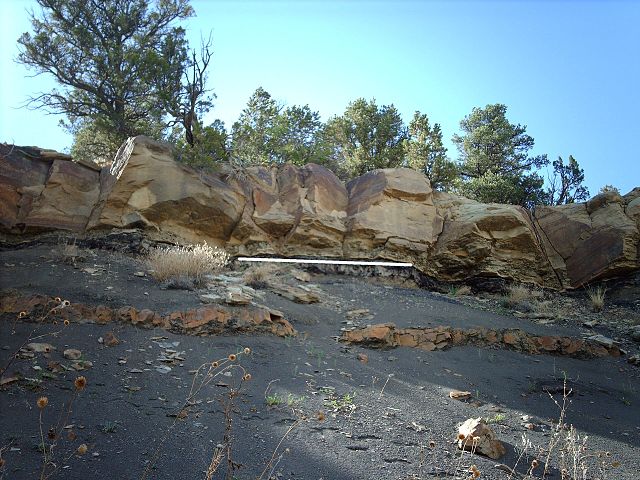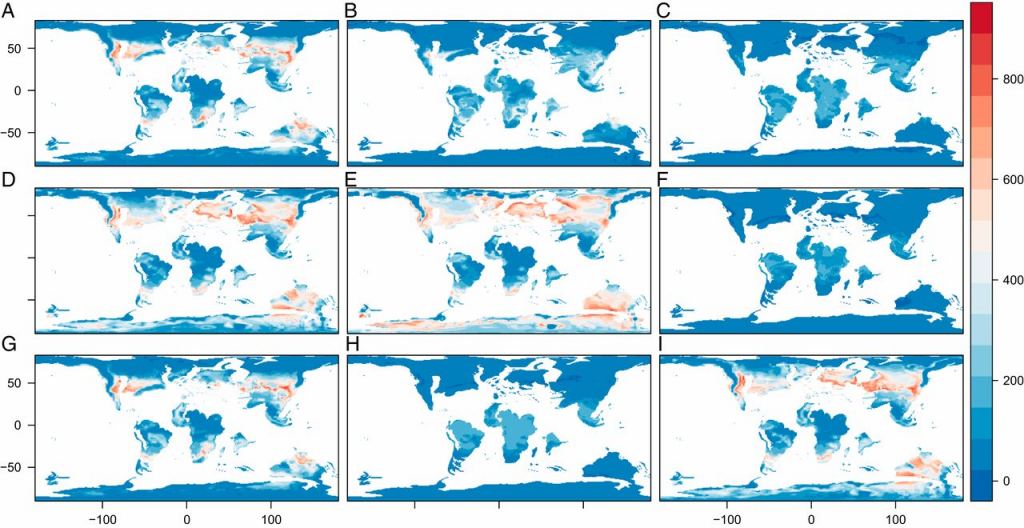It seems almost certain that an asteroid impact wiped out the dinosaurs. But only almost. Another competing theory won’t completely go away: the extinction-by-volcano theory.
A new study from the UK piles more evidence on the asteroid side of the debate, while adding a new volcanic twist. These researchers say that volcanic activity actually helped life recover from the asteroid strike.
Most scientists support the Chicxulub impact event as the cause of the dinosaurs’ demise. The asteroid strike caused a 100 million megaton blast that altered the course of life on Earth. It caused an immediate shockwave and thermal spike that would have been catastrophic for anything in the region. It lofted super-heated rubble and melted rock into the air, and sent a mega-tsunami to scour nearby coastlines. The impact was so powerful, that even thousands of kilometers away there’s evidence of an instantaneous die-off of diverse animal types.
Carbonate rocks were destroyed at the impact site, and that sent an enormous amount of carbon into the atmosphere, creating an immediate greenhouse effect. But that didn’t last. Dust from the impact persisted in the atmosphere for a decade, maybe several, cooling the climate, and ultimately wiping out 75% of life on Earth. The word catastrophe might have been invented just to explain it all.

There’s a massive amount of evidence supporting the theory. And the new study adds even more evidence in favor of it, while also saying that sustained volcanic activity after the impact helped life recover.
The study is titled “Asteroid impact, not volcanism, caused the end-Cretaceous dinosaur extinction.” It’s published in the Proceedings of the National Academy of Sciences of the United States of America. The lead author is Dr. Alessandro Chiarenza, from the Department of Earth Science and Engineering at Imperial College, London.
“Our study confirms, for the first time quantitatively, that the only plausible explanation for the extinction is the impact winter that eradicated dinosaur habitats worldwide.”
Dr. Alessandro Chiarenza, Lead Author, Imperial College, London
There was pronounced volcanic activity around the time of the dinosaur extinction, more formally known as the Cretaceous-Paleogene (K-Pg) Extinction. The Deccan Traps in India is one of the largest volcanic features on Earth, and the eruptions that formed it started about 66 million years ago, just prior to the asteroid impact. Collectively, the eruptions are called the Deccan Pulse. Ruling out that volcanic activity as a cause of, or a contributing factor to, the K-Pg extinction has been difficult.

In a press release, lead author Chiarenza said, “We show that the asteroid caused an impact winter for decades, and that these environmental effects decimated suitable environments for dinosaurs. In contrast, the effects of the intense volcanic eruptions were not strong enough to substantially disrupt global ecosystems.”
“Our study confirms, for the first time quantitatively,” Chiarenza continued, “that the only plausible explanation for the extinction is the impact winter that eradicated dinosaur habitats worldwide.”
There’s some overlap, which clouds the issue. The Chicxulub impact sent gases and particles high up into the atmosphere, blocking out sunlight and changing the climate. The Deccan Pulse would’ve also altered the climate, and it started prior to the impact and lasted much longer. That volcanic activity lasted for tens of thousands of years.

There’s lots of physical evidence of both the impact and the Deccan Pulse. But a lot of the work around the extinction consists of climate modelling and simulations. This new work used similar, powerful mathematical models, but it also combined that modelling with other environmental information: things like the rainfall and temperature required for different dinosaur species to thrive.
The team mapped their data in two maps: one showing where the conditions right for survival were after an asteroid strike, and one for after massive volcanic activity. Their results were clear. They found that only the asteroid strike wiped out all potential dinosaur habitats, while volcanism left some viable regions around the equator.
Co-author Dr Philip Mannion, from University College London, added: “In this study we add a modelling approach to key geological and climate data that shows the devastating effect of the asteroid impact on global habitats. Essentially, it produces a blue screen of death for dinosaurs.”
Co-lead author of the study Dr Alex Farnsworth, from the University of Bristol, said: “Instead of only using the geologic record to model the effect on climate that the asteroid or volcanism might have caused worldwide, we pushed this approach a step forward, adding an ecological dimension to the study to reveal how these climatic fluctuations severely affected ecosystems.”
But that’s not the last word.
There seems to be no doubt that the impact caused not only immediate widespread death, and the longer-term consequence, an “impact winter.” Whatever life survived the Chicxulub catastrophe had to contend with a much cooler climate, and a global crash in photosynthesis.

But the volcanoes that created the Deccan Traps were still erupting. And although volcanoes can cool the climate by sending dust and gases high into the atmosphere, they also produce carbon dioxide. And all of that CO2, over the long term, helped the climate to warm again.
So after the devastation of the impact, the volcanoes helped life recover again.
“We provide new evidence to suggest that the volcanic eruptions happening around the same time might have reduced the effects on the environment caused by the impact, particularly in quickening the rise of temperatures after the impact winter,” said lead author Chiarenza. “This volcanic-induced warming helped boost the survival and recovery of the animals and plants that made it through the extinction, with many groups expanding in its immediate aftermath, including birds and mammals.”
Believe it or not, the K-Pg extinction of the dinosaurs was not the worst extinction event in Earth’s history, despite it being the most well-known. The Permian-Triassic mass extinction wiped out about 96 percent of the planet’s marine species and 70 percent of its terrestrial life. That was about 252 million years ago. And it was most likely caused by extensive volcanism. And another extinction, the Triassic/Jurassic mass extinction, was about 201 million years ago and also may have been caused by extensive volcanism. So it’s reasonable to wonder if volcanic activity caused, or at least contributed to, the K-Pg extinction event that wiped out the dinosaurs.

But the evidence supporting a volcanic cause for the K-Pg extinction just doesn’t line up. Instead, it looks like volcanoes prompted life’s rapid recovery from the Chicxulub impact event by injecting voluminous amounts of CO2 into the atmosphere, and counteracting the cooling from the impact.
“Even within the site of the asteroid impact, rich communities were reestablished within 30 ky of the K/Pg boundary,” the authors write in their paper. “This implies a very rapid recovery of marine productivity which argues against the suggested delay in ecosystem reset caused by continued Deccan volcanism after the K/Pg boundary.”

This study probably won’t be the last word on the K-Pg event and the mass extinction. It won’t convince all scientists. Other thinkers will still point to volcanic activity as a co-cause of the extinction. Others will still embrace the multiple-impact hypothesis. But their numbers are shrinking as more and more research confirms the Chicxulub impact as the cause.
One impact to rule them all.


